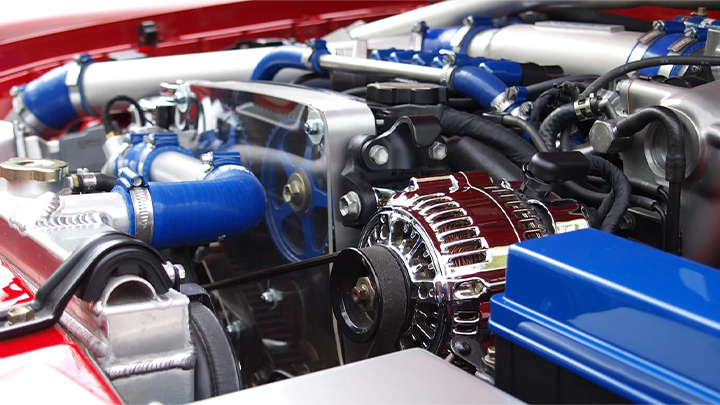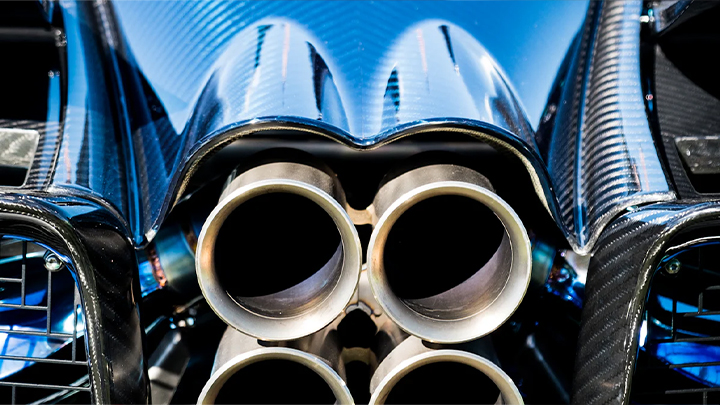Harmonic balancers play a crucial role in engines by reducing vibrations and ensuring smooth operation. The selection of materials significantly enhances the performance of these components. Nodular iron, steel, and aluminum are common choices, each offering unique benefits. Nodular iron provides durability for heavy-duty applications. Steel offers a balance between strength and weight. Aluminum provides lightweight properties suitable for high-performance needs. The automotive industry now focuses on innovative materials to improve efficiency and durability. Advanced materials contribute to enhanced vibration dampening, leading to improved engine performance.
Understanding Harmonic Balancers
Function and Importance
Harmonic balancers serve a critical function in automotive engines. These components reduce vibrations caused by the engine’s rotating parts. The reduction of vibrations ensures smoother operation and enhances the overall driving experience. Harmonic balancers also play a vital role in maintaining engine stability.
Role in Engine Performance
The role of a harmonic balancer in engine performance is significant. Engines produce vibrations due to the combustion process and the movement of pistons and crankshafts. A harmonic balancer absorbs these vibrations, preventing them from affecting other engine components. This absorption leads to improved engine efficiency and performance.
Impact on Longevity and Efficiency
The impact of harmonic balancers on engine longevity and efficiency cannot be overstated. By minimizing vibrations, harmonic balancers reduce wear and tear on engine parts. This reduction extends the lifespan of the engine and its components. Efficient vibration control also contributes to better fuel efficiency, as the engine operates more smoothly.
Traditional Materials Used
Traditional materials have been the backbone of harmonic balancer construction for decades. Each material offers unique properties that cater to specific needs in engine performance.
Common Materials and Their Limitations
Nodular iron, steel, and aluminum are the most common materials used in harmonic balancers. Nodular iron provides exceptional durability, making it ideal for heavy-duty applications. Steel offers a balance between strength and weight, suitable for various engine types. Aluminum is lightweight and provides excellent heat dissipation, making it perfect for high-performance engines. Despite their advantages, these materials have limitations. Nodular iron can be heavy, affecting fuel efficiency. Steel may not provide the best heat dissipation. Aluminum, while lightweight, may lack the necessary strength for some applications.
Historical Context of Material Use
The historical context of material use in harmonic balancers reveals an evolution in design and functionality. Early harmonic balancers relied heavily on cast iron due to its availability and strength. As engine technology advanced, the need for lighter and more efficient materials became apparent. The introduction of steel and aluminum marked a significant shift in the industry. These materials allowed for more refined designs that addressed emerging challenges in engine dynamics. Technological advancements continue to drive the development of superior quality harmonic balancers, meeting the demands of modern engines.
Innovative Materials in Harmonic Balancers
Types of Innovative Materials
Composite Materials
Composite materials have revolutionized the design of harmonic balancers. Engineers combine different substances to create composites with superior properties. These materials offer enhanced strength and reduced weight. Composites improve the efficiency of harmonic balancers by providing better vibration absorption. The automotive industry benefits from these advancements in material science. Composite materials extend the lifespan of harmonic balancers.
Advanced Alloys
Advanced alloys play a crucial role in modern harmonic balancers. Manufacturers use alloys to achieve a balance between strength and flexibility. These materials withstand high temperatures and pressures. Advanced alloys enhance the performance of harmonic balancers by reducing wear and tear. The use of alloys contributes to the overall durability of the component. Engineers continue to explore new alloy combinations for improved results.
Benefits of Using Innovative Materials
Enhanced Durability
Innovative materials significantly improve the durability of harmonic balancers. Composite materials and advanced alloys resist corrosion and fatigue. This resistance ensures a longer service life for the components. Durable harmonic balancers reduce maintenance costs for vehicle owners. The automotive industry prioritizes longevity in component design. Enhanced durability leads to more reliable engine performance.
Improved Vibration Reduction
Harmonic balancers benefit from innovative materials through improved vibration reduction. Composites and alloys absorb vibrations more effectively than traditional materials. This absorption results in smoother engine operation. Reduced vibrations enhance the driving experience for vehicle users. Improved vibration control also contributes to better fuel efficiency. The focus on innovative materials drives advancements in harmonic balancer technology.
Case Studies and Industry Examples
Leading Companies and Their Innovations
Case Study 1: Werkwell
Werkwell stands as a leader in the development of innovative harmonic balancer solutions. The company focuses on precision engineering to enhance engine performance. Werkwell’s approach involves using advanced materials that improve the durability and efficiency of harmonic balancers. The company employs rigorous quality control processes to ensure each product meets high standards. Werkwell’s commitment to innovation has resulted in products that reduce engine vibrations effectively. The company’s harmonic balancers cater to a wide range of vehicle models, including GM, Ford, Chrysler, Toyota, and Honda. Werkwell’s dedication to customer satisfaction drives continuous improvement in their product offerings.
Case Study 2: SUNBRIGHT
SUNBRIGHT represents another key player in the harmonic balancer market. The company invests heavily in research and development to create cutting-edge solutions. SUNBRIGHT focuses on using composite materials to enhance the performance of harmonic balancers. These materials offer superior vibration absorption, leading to smoother engine operation. SUNBRIGHT’s products undergo extensive testing to ensure reliability and longevity. The company’s innovations have set new benchmarks in the industry. SUNBRIGHT continues to explore new material combinations to further improve harmonic balancer technology.
Real-World Applications
Automotive Industry
The automotive industry relies heavily on harmonic balancers for engine stability. These components play a crucial role in reducing vibrations and enhancing performance. Advanced materials used in harmonic balancers contribute to better fuel efficiency. The automotive sector benefits from innovations that extend the lifespan of these components. Manufacturers prioritize lightweight materials to improve vehicle efficiency. The focus on innovative materials drives advancements in automotive engineering.
Aerospace Industry
The aerospace industry also utilizes harmonic balancers to maintain engine stability. These components help reduce vibrations in aircraft engines. The use of advanced alloys enhances the durability of harmonic balancers in aerospace applications. The industry demands high-performance materials that withstand extreme conditions. Innovations in material science have led to more efficient harmonic balancer designs. The aerospace sector continues to explore new technologies to improve engine performance.
Future Trends and Prospects
Emerging Materials and Technologies
Nanotechnology in Harmonic Balancers
Nanotechnology represents a groundbreaking advancement in the development of harmonic balancers. Engineers employ nanomaterials to enhance the strength and flexibility of these components. Nanoparticles improve vibration dampening by altering the material’s molecular structure. This enhancement leads to more efficient harmonic balancers with superior performance. The automotive industry benefits from nanotechnology’s ability to reduce component weight while maintaining durability. Researchers continue to explore new applications of nanotechnology in harmonic balancer design.
Sustainable Material Innovations
Sustainable materials have become a focal point in the evolution of harmonic balancers. Manufacturers prioritize eco-friendly solutions to meet environmental regulations. Recycled composites and bio-based materials offer viable alternatives to traditional substances. These innovations reduce the carbon footprint associated with harmonic balancer production. Sustainable materials also provide cost-effective solutions for manufacturers. The shift towards green technologies aligns with global efforts to promote sustainability in automotive engineering.
Industry Outlook and Predictions
Market Growth and Opportunities
The harmonic balancer market shows promising growth prospects. Increasing demand for fuel-efficient vehicles drives this expansion. Advanced materials contribute to the development of lighter and more efficient harmonic balancers. The market experiences a compound annual growth rate (CAGR) of 5.5% from 2022 to 2030. Automotive manufacturers seek innovative solutions to enhance engine performance. The focus on lightweight materials presents significant opportunities for industry players. Companies invest in research and development to capitalize on these trends.
Challenges and Considerations
The harmonic balancer industry faces several challenges. Material costs pose a significant concern for manufacturers. Advanced materials often require substantial investment in research and development. The integration of new technologies demands skilled labor and expertise. Environmental regulations necessitate compliance with stringent standards. Manufacturers must balance innovation with cost-effectiveness. The industry navigates these challenges by fostering collaboration and knowledge sharing. Continuous improvement remains essential for sustained growth and success.
Innovative materials play a crucial role in enhancing harmonic balancers. These materials improve engine performance and efficiency. The automotive industry focuses on advanced composites and alloys. This focus leads to superior vibration reduction and durability. Future developments in material science will transform the industry. Emerging technologies like nanotechnology offer exciting possibilities. Sustainable materials also gain importance in manufacturing. Continuous research and innovation drive progress in harmonic balancer technology. The pursuit of advanced materials ensures ongoing improvements in automotive engineering.
Post time: Aug-27-2024





